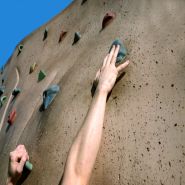Lack of confidence and poor body image in girls as young as seven is driving them to give up sport, but what can be done to solve the problem and how can we use PE to promote a positive body image?
A lack of self-confidence is one of the biggest barriers to girls participating in sport, and one of the most problematic manifestations of this is poor body image. At a time when both obesity and eating disorders among young girls are at their highest, addressing this is of utmost importance.
Current research
The statistics are shocking. Almost a third of year six girls (31.5%) are obese, according to government findings; on the other hand there has been a huge rise in young people being admitted to hospital for treatment of an eating disorder.
For example, NHS figures showed that the number of 14-year-old girls being treated for an eating disorder in 2013-14 was 336 – up from just 74 a decade earlier.
Government research has shown that up to the age of seven, participation in sport is largely the same for girls and boys. After year three, however, girls become more self-conscious and more concerned with personal appearance.
This chimes with a previous study by Girlguiding UK showing that 23% of girls aged 7-21 don’t participate in exercise because they are unhappy with their body image (their 2016 and 2017 Girls’ attitudes surveys contain a very interesting range of statistics about body image/confidence and participation in sports).
How to promote a positive body image
It’s never too early to boost girls’ self-confidence and PE lessons offer the ideal opportunity. The two areas to cover are nutrition and exercise, with an emphasis on what’s healthy, rather than being skinny or losing weight.
Explain the importance of nutrition in fuelling a healthy lifestyle. Ban the idea of good and bad, right and wrong foods, and never, ever allow body shaming – even if it’s meant as a joke.
If the facilities are available, you could even bring the kitchen to the classroom and devote a whole lesson to cooking a favourite healthy meal that students can share. Show them that healthy doesn’t have to mean boring.
Dealing with a pupil that you suspect has an eating disorder is challenging and beyond the scope of this article. If you have concerns, make sure you get support and check that your school has a policy in place for correctly handling this difficult subject.
Exercise and health
You can also show how exercise is important to maintaining health. Talk about the ‘mechanics’: how the body works, the musculature, how calories are converted to energy and so on. The more students know about how their body works the better.
This is especially true for pubescent girls, who are going through a lot of change – eating disorders usually begin in the teenage years, and understanding why these changes are happening and that it’s all perfectly normal will reassure confused adolescents.
Among girls’ biggest fears are that sport is masculine and that working out will make them muscley. You can address this by looking at female role models – read our interview with Sarah Hunter. Olympic cycling champion Joanna Rowsell-Shand is another good example.
You can also introduce less traditional activities. Dance is very popular at the moment and you can use it to show that exercise can be fun by showing Strictly Come Dancing in lesson time. You could even ask local professional or semi-professional dancers to come in and give a talk.
Rebecca has been a writer and editor for almost 20 years. She writes on a huge range of subjects, concentrating on sport, nature, mental health, and crafts.










